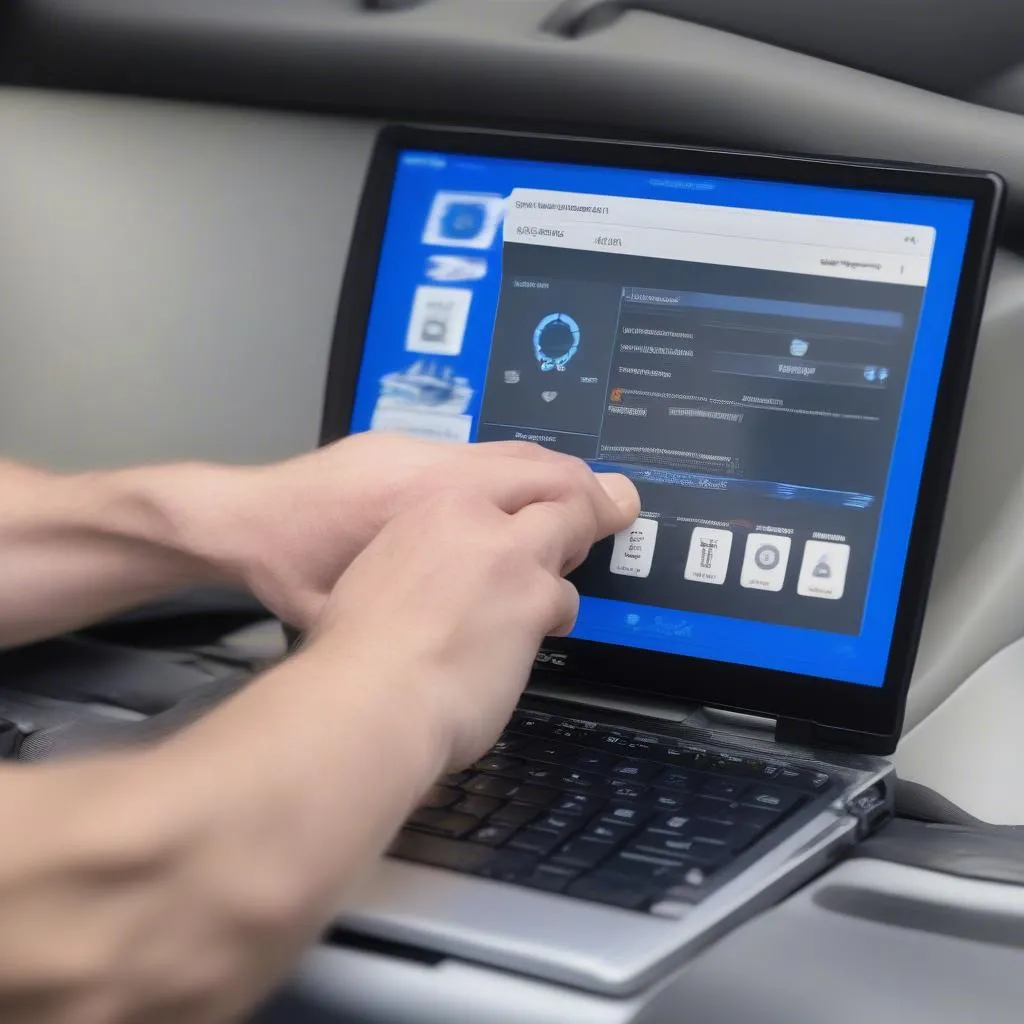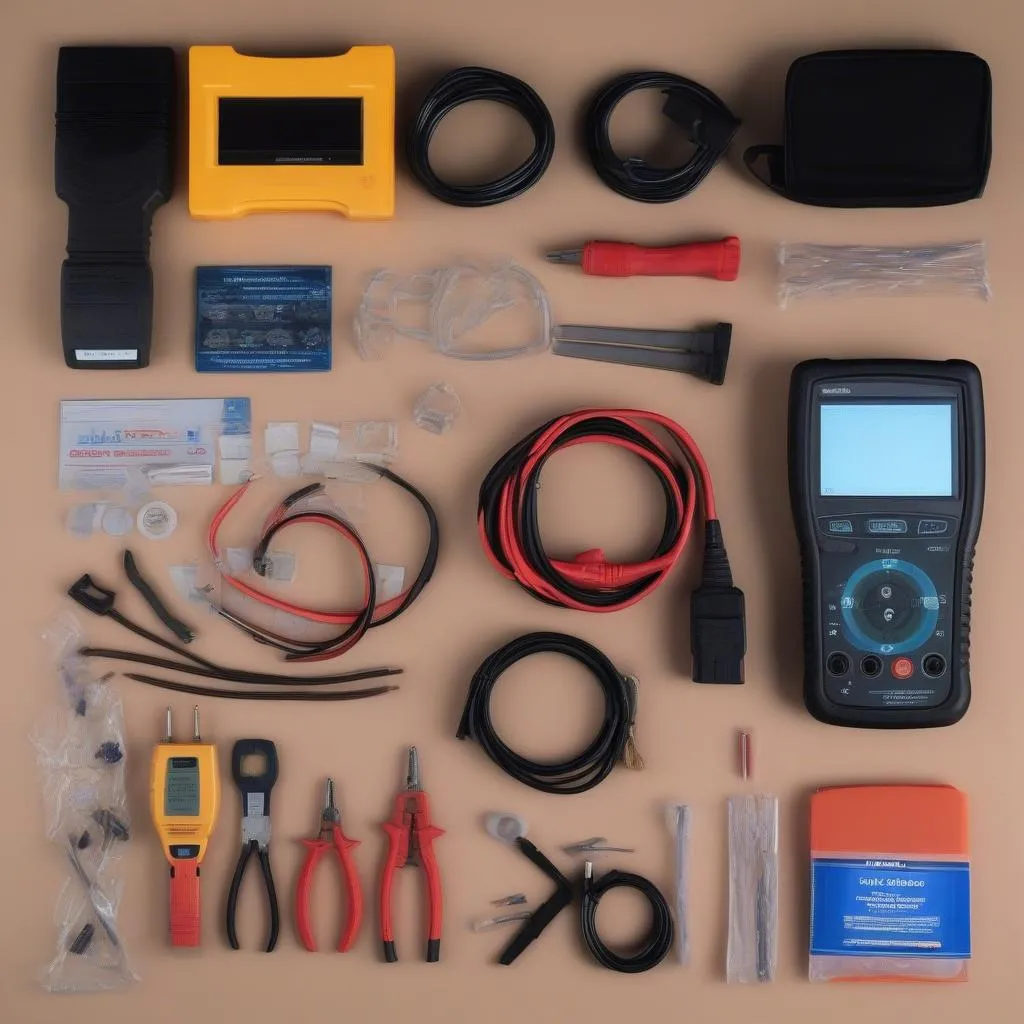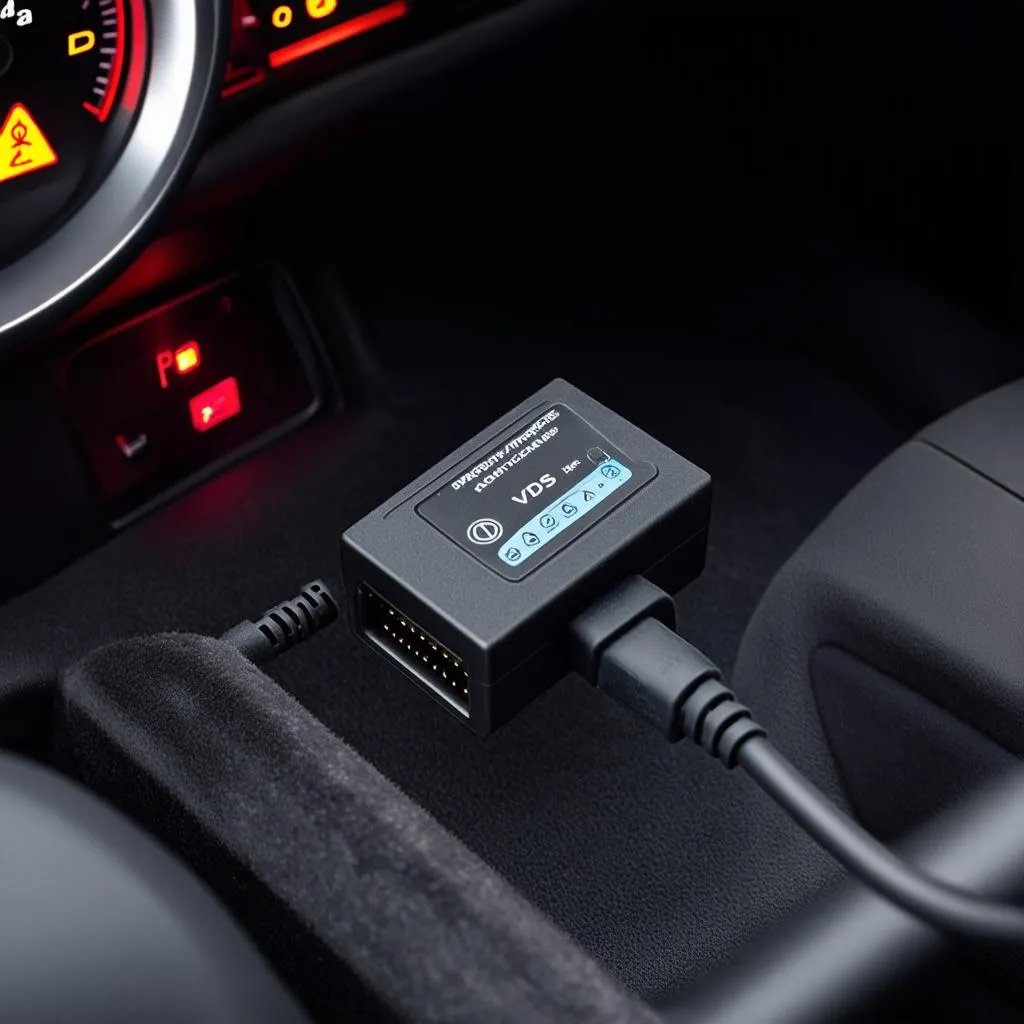In the world of automotive diagnostics, having the right tools and knowledge can mean the difference between a quick fix and hours of frustration. This is where VCDS (Vag-Com Diagnostic System) shines. VCDS Basic Settings, a powerful feature within the software, allows you to delve into your vehicle’s control modules, make adjustments, and ensure everything runs smoothly. This comprehensive guide will equip you with the knowledge to confidently navigate and utilize VCDS Basic Settings.
Understanding VCDS Basic Settings
What are VCDS Basic Settings?
VCDS Basic Settings are essentially a set of standardized procedures that allow you to interact with the various control modules in your Volkswagen Audi Group (VAG) vehicle. Think of it as a way to instruct specific modules to perform actions or recalibrate themselves to factory specifications.
Example: Imagine you’ve just replaced a throttle body in your Audi A4. Using VCDS Basic Settings, you can access the engine control module and perform a throttle body alignment. This ensures the module recognizes the new component and operates it correctly.
Why are Basic Settings Important?
- Troubleshooting: Basic Settings help pinpoint issues by allowing you to isolate and test individual components or systems.
- Adaptation and Calibration: After replacing parts or making modifications, Basic Settings help calibrate components to work harmoniously.
- Enhanced Performance: Properly calibrated components can contribute to smoother engine operation, better fuel efficiency, and improved overall performance.
Navigating VCDS Basic Settings
Connecting to Your Vehicle
- Ensure you have a genuine VCDS system and the correct cable for your vehicle.
- Connect the interface to your vehicle’s OBD-II port (usually located under the dashboard on the driver’s side).
- Turn the ignition on but do not start the engine.
- Launch the VCDS software on your computer.
Accessing Basic Settings
- Once VCDS establishes communication with your vehicle, select “Select Control Module.”
- Choose the specific module related to the system you’re working on (e.g., Engine, Transmission, ABS).
- Within the module’s menu, locate and click on “Basic Settings.”
Performing Basic Settings Procedures
- Carefully read the instructions displayed within VCDS for the specific Basic Setting you’re about to perform. Each procedure is unique and may have specific requirements or steps.
- Follow the on-screen prompts and input any required values.
- Pay close attention to any confirmation messages or fault codes that may appear during the process.
 Performing VCDS Basic Settings
Performing VCDS Basic Settings
Tip: Always refer to your vehicle’s service manual or a reputable online resource for detailed instructions and precautions related to the specific Basic Setting procedure you are performing.
Common Uses of VCDS Basic Settings
- Throttle Body Alignment: Ensures the throttle plate is properly calibrated, leading to smoother acceleration and idle.
- EGR Valve Adaptation: Helps the EGR valve maintain optimal flow, reducing emissions and improving engine efficiency.
- DPF Regeneration: Initiates a forced regeneration cycle of the diesel particulate filter, clearing out accumulated soot.
- Steering Angle Sensor Calibration: Resets the sensor after an alignment or component replacement, ensuring accurate steering input.
 Car Diagnostic Tools
Car Diagnostic Tools
Precautions and Tips
- Back Up Your Settings: Before making any changes, back up your existing control module coding and adaptations. This allows you to revert to the previous settings if needed.
- Consult Reliable Sources: Only perform Basic Settings procedures that you fully understand. Refer to your vehicle’s service information or reputable VCDS resources for guidance.
- Proceed with Caution: Modifying certain settings without proper knowledge can negatively impact your vehicle’s performance or even damage components.
FAQs
Q: Can I damage my car using VCDS Basic Settings?
A: While VCDS Basic Settings are generally safe when used correctly, performing procedures incorrectly or without proper understanding can potentially cause issues. Always double-check instructions and consult reliable sources before making changes.
Q: Do I need VCDS to perform Basic Settings?
A: VCDS is specifically designed for VAG vehicles. While some generic OBD-II scanners might offer limited basic setting functionality, VCDS provides the most comprehensive access and control.
Q: I encountered an error during a Basic Setting procedure. What should I do?
A: Note down the error code and consult the VCDS help files or a dedicated forum for assistance. It’s crucial not to ignore errors and to address them properly.
Conclusion
VCDS Basic Settings provide a gateway to unlock the full potential of your VAG vehicle’s diagnostics and customization. By understanding the fundamentals, practicing caution, and relying on credible resources, you can confidently use this tool to keep your vehicle running smoothly for years to come. If you’re seeking expert guidance on automotive diagnostic tools, consider exploring the range of products and services offered by CARDIAGTECH. They provide a wide selection of professional-grade equipment, including top-tier VCDS systems, to help you achieve optimal vehicle maintenance and diagnostics.

